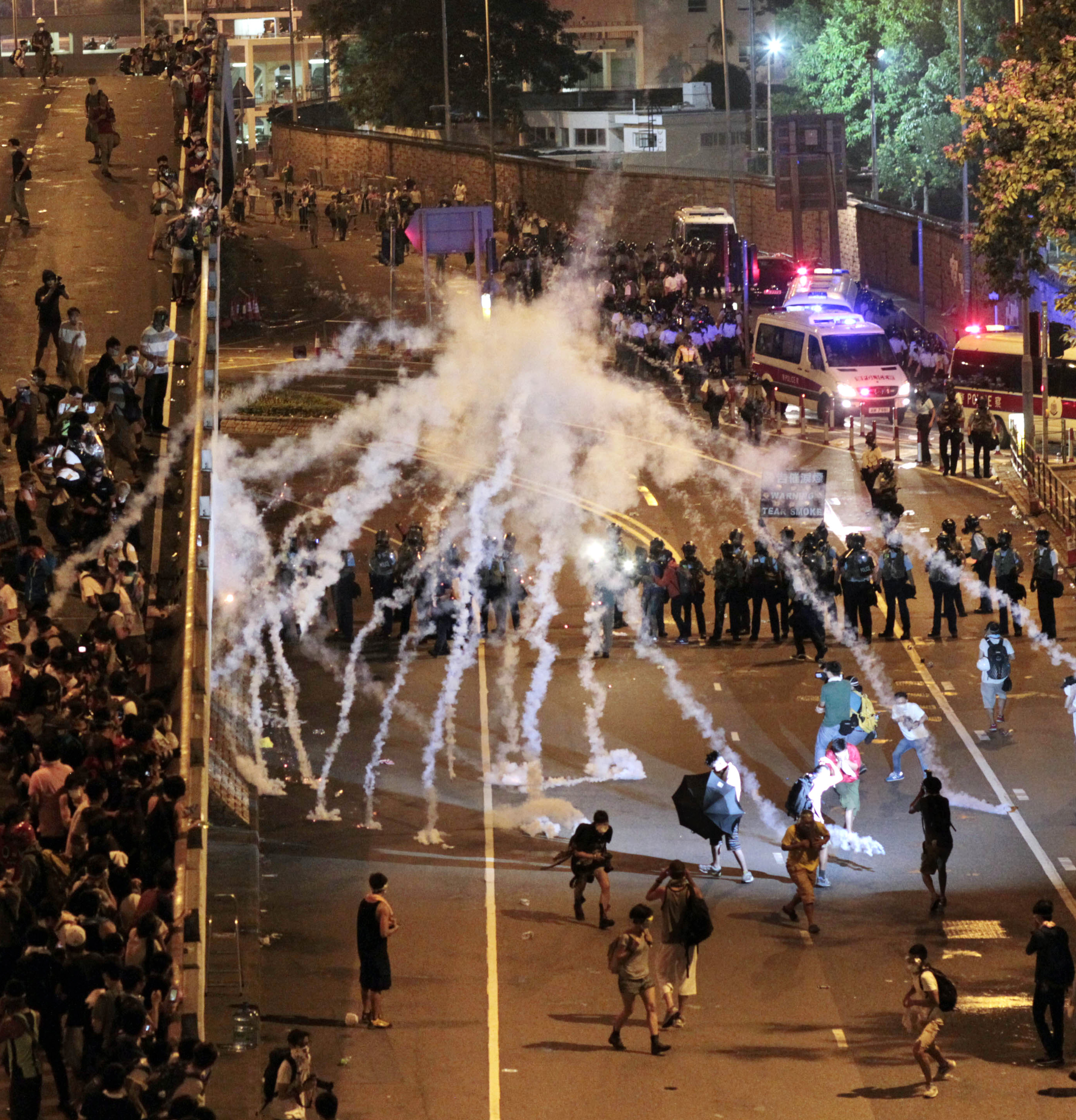Police defend tear gas use as Hong Kong protests grow occasionally violent
Police defended their use of tear gas and other methods to control the pro-democracy protests that have paralyzed Hong Kong’s financial district, and appealed Monday for an end to the unprecedented acts of civil disobedience. Their tactics appeared to have backfired, however, judging from the growing crowds as people finishing work joined weary-looking students camped on major roads near the city’s government headquarters and in several other areas. “The students are protecting the right to vote, for Hong Kong’s future. We are not scared, we are not frightened, we just fight for it,” said Carol Chan, a 55-year-old civil service worker who took two days off to join the protests after becoming angered over police use of tear gas Sunday.
Police cordon lines were heavily charged by some violent protesters. So police had to use the minimum force in order to separate the distance at that moment between the protesters and also the police.
Cheung Tak-keung, Hong Kong assistant police commissioner for operations
Instead of candlelight, a few hundred people staged a brief “mobile light” protest Monday night, raising their glowing mobile phones into the air. One person chanted the name of the city’s unpopular leader, Chief Executive Leung Chun-ying, while the others responded with “Resign. Resign.” Students and activists have been camped out since late Friday, demanding that Beijing grant genuine democratic reforms to the former British colony. Signalling it doesn’t expect a quick end to the demonstrations, the government said it was cancelling a fireworks display planned for National Day celebrations Wednesday. In a shift of tactics, uniformed police manned barricades and looked on, blocking access to some buildings on Monday, but otherwise not intervening. Police said they used 87 rounds of tear gas Sunday in what they called a necessary but restrained response to protesters pushing through cordons and barricades. They said 41 people were injured, including 12 police officers.

World hong kong